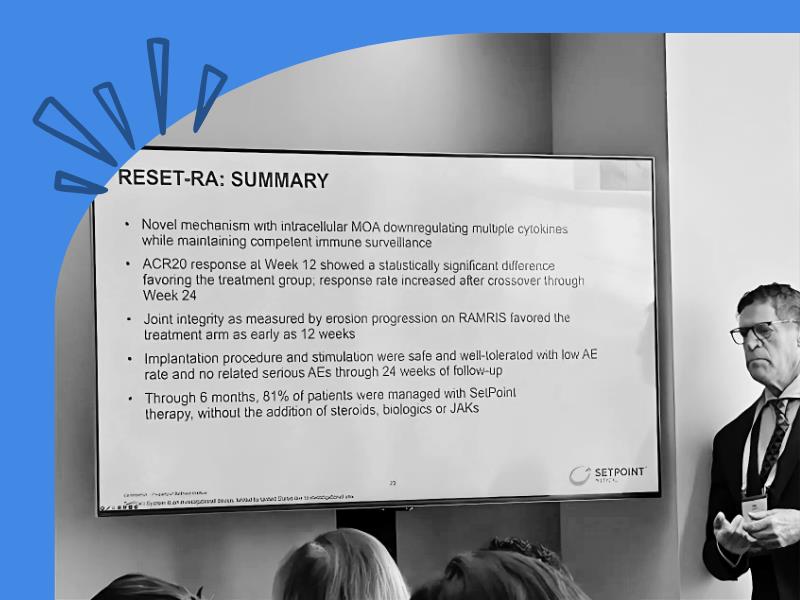Glucocorticoids (Prednisone, Depo-Medrol®, Aristospan®, Kenalog®)
Glucocorticoids are medicines used to reduce inflammation. They may also be called corticosteroids or even “steroids” for short. The most commonly prescribed glucocorticoids are prednisone and methylprednisolone (Medrol®), which are taken orally. Corticosteroids may also be injected by your physician directly into the affected joint(s).
Glucocorticoids are designed to act the same way as the hormones (natural steroids) made by your adrenal glands that sit on top of your kidneys. They can suppress inflammation and make your immune system less active. They are powerful drugs for fighting a flare of inflammation – and they can work quickly to bring it under control.
Why am I taking glucocorticoid?
More than likely, you are taking glucocorticoids short term to help treat joint pain and swelling during a flare or while you’re waiting for your DMARD or biologic drug to take effect. Sometimes, none of your other medications reduce your symptoms enough, so you add a low dose of steroids. Because steroids have side effects, it’s best to take the lowest possible dose you need to ease your symptoms. You should never suddenly stop your steroids if you have been taking them for longer than two weeks, unless you have tapered to a low enough dose as directed by your doctor.
Glucocorticoids can:
- Ease a local flare of pain and swelling quickly
- Help you control pain until oral drugs like DMARDs or biologics can “kick in”
The most common glucocorticoids used for injections are:
- methylprednisolone acetate (Depo-Medrol®)
- triamcinolone hexacetonide (Aristospan®)
- triamcinolone acetonide (Kenalog®)
You may be understandably worried that a shot in an already swollen, painful joint will really hurt. Your rheumatologist may also give you a local anesthetic at the site where you get the injection to numb it first. This may help ease the pain of the injection so you can get the medicine into the joint space to do its work.
What are the side effects of a glucocorticoid injection?
Joint injections of steroids have few side effects. It’s not the same as taking oral glucocorticoid pills for a long time.
Possible side effect of these shots are:
- Increased infection risk
- Diabetes
- Hypertension
- High blood pressure
- Weight gain
- Osteopenia and osteoporosis (thinning or weakened bones)
- Glaucoma or cataracts in your eyes
- Acne
- Roundness of the face or “moon face”
- Nervousness and inability to sleep (particularly if you take it at night)
The possible side effects for people with psoriatic arthritis:
- Pain flare at the injection site
- Skin atrophy
- Fat atrophy
- Flushed face
- Infection at the site (rare)
- Ruptured tendon (rare)
- Psoriasis lesion at the injection site
Your chances of having these side effects depend on your dose, how long you take glucocorticoids, or if you have other medical conditions.
Oral Glucocorticoids
An oral glucocorticoid is a steroid that comes in a pill form such as prednisone (Deltasone®, Orasone®). These drugs are also called steroids for short. You may only need to take oral glucocorticoids if you have a severe flare. These are also called “dose-packs.” That’s because long-term use of these drugs can have some serious side effects. In low doses and for a short period of time (days or weeks), side effects are less likely.
Your dose and the time you need to take oral glucocorticoids can vary. Your doctor will give you the lowest dose of oral glucocorticoids for the shortest time possible to control your flare.
You will take a dose of oral glucocorticoids that taper. That means your first pill will be at the highest dose, and then the pills will have gradually lower doses. This will help your body ease off the medication. Take the whole dose as your doctor
prescribes.
Corticosteroid and Pregnancy
Corticosteroid are considered relatively safe to use during pregnancy and breastfeeding. They can relieve symptoms of a fare quickly and should be used at the lowest dose and for the shortest time possible. They do not transfer across the placenta to the fetus at a high level. Some evidence shows a low risk of a fetus developing a cleft lip if the mother takes corticosteroids in the first trimester of pregnancy. Prednisone may also contribute to the risk for preterm labor and fetal growth restrictions.
Glucocorticoids: A Love / Hate Relationship Webinar
CreakyJoints hosted a webinar with Dr. Michael George from the University of Pennsylvania on the uses of glucocorticoids for people living with chronic disease. Watch and learn about steroids and how they work, the uses and benefits, the potentials side effects, and the different dosage levels.





